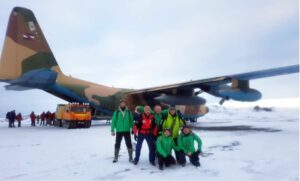 Six Bulgarian polar explorers: Yordan Todorov, Petar Sapundzhiev, Emil Ivanov, Nikolay Nikolov, Kamen Nedkov and the doctor Dr. Atanas Peltekov, after about a month of delay, on April 14 2021, left the Antarctic region and, by a Uruguayan military plane arrived in the southernmost Chilean city of Punta Arenas.
Six Bulgarian polar explorers: Yordan Todorov, Petar Sapundzhiev, Emil Ivanov, Nikolay Nikolov, Kamen Nedkov and the doctor Dr. Atanas Peltekov, after about a month of delay, on April 14 2021, left the Antarctic region and, by a Uruguayan military plane arrived in the southernmost Chilean city of Punta Arenas.
The adventure of the 29th Bulgarian Antarctic Expedition started late due to a sequence of facts: The Spanish ship Esperides, which was scheduled to arrive at Livingston Island, did not sail from Spain at all, due to cases of Covid-19 of some of the crew. After twenty days of strict quarantine in Punta Arenas (each of the six Bulgarian guys was alone in a hotel room with food delivered to the door), the other Spanish ship, the Sarmiento de Gamboa, carried the group before the closure of the Spanish Base Juan Carlos I (WAP ESP-Ø1). The Chilean icebreaker Aquilez, which was scheduled to carry the Bulgarians from Livingstone Island at the end of March, was also quarantined due to Covid testing positive for some of the crew.
At the end of the season, before the onset of polar winter, there were practically no ships in the area of the South Shetland Islands. Prof. Pimpirev (doyen of the Bulgarian Antarctic Program) made contact with the Chilean Antarctic Institute, the polar ship Lautaro went to take the group, threatened them with hibernation, without supplies of food and fuel, to the largest island in the area, King George, where there are several year-round bases and an airport. “Despite logistical problems, the expedition was able to complete all planned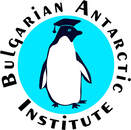 activities. Damage to facilities and buildings on the base caused by high winds during the time when no one was on the base was repaired and it was conserved for the coming winter. The site was prepared for the construction of the new laboratory block, a special hangar was built for the incinerator, which burns the waste ecologically, and all the data were taken from the year-round scientific equipment, which records climatic, seismic, mareographic and glaciological events, in the area when the base is not inhabited” said Prof. Dr. Hristo Pimpirev, head of all Bulgarian polar expeditions and director of the Bulgarian Antarctic Institute.
activities. Damage to facilities and buildings on the base caused by high winds during the time when no one was on the base was repaired and it was conserved for the coming winter. The site was prepared for the construction of the new laboratory block, a special hangar was built for the incinerator, which burns the waste ecologically, and all the data were taken from the year-round scientific equipment, which records climatic, seismic, mareographic and glaciological events, in the area when the base is not inhabited” said Prof. Dr. Hristo Pimpirev, head of all Bulgarian polar expeditions and director of the Bulgarian Antarctic Institute.
In Punta Arenas the polar explorers have not been under quarantine, their return to Bulgaria is expected on April 19.
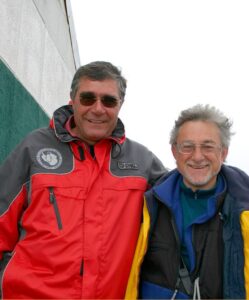 Prof. Hristo Pimpirev, together with Javier Cacho, a Spanish scientist physicist , recently received the “Unifier of Cultures” award in the eighth “Worlds and Colors” contest, organized by the Association of Spanish speaking Journalists in Bulgaria. (pic to the left)
Prof. Hristo Pimpirev, together with Javier Cacho, a Spanish scientist physicist , recently received the “Unifier of Cultures” award in the eighth “Worlds and Colors” contest, organized by the Association of Spanish speaking Journalists in Bulgaria. (pic to the left)
Javier Cacho is one of the first researchers of the ozone hole. He was the base commander of the Spanish polar Station “Juan Carlos I” on Livingston island. He is also a famous writer and several of his Antarctica books have been translated into Bulgarian. The “Worlds and Colours” awards are given to journalists, artists and intellectuals for their overall contribution to the rapprochement between the cultures of Bulgaria and the Spanish-speaking world. Due to the epidemiological situation, the award will be held as an online event until the end of April.
Text taken from the original article at: https://bnr.bg/hristobotev/post/101453437
TNX Dr. Volker Strecke DL8JDX
 Sad news forwarded by Bhagwati VU3BPZ (8T2BH-AT1ØBPR).
Sad news forwarded by Bhagwati VU3BPZ (8T2BH-AT1ØBPR).

 Dr. Eddy De Busschere is the Secretary of the Belgian Polar Exploration Society (BPES).
Dr. Eddy De Busschere is the Secretary of the Belgian Polar Exploration Society (BPES).
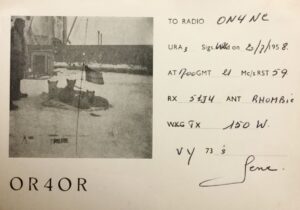 He said: « Jean Hooghewys OR4OR is no longer with us and I cannot contact his family to find out if any cards are left. It is the only card I am still missing from the Belgian Antarctic base 1957-1967. I think I have all the others. The only person that has such a card is Ghis Penny (ON5NT). May be there is someone able to offer me such a card. I keep my fingers crossed.
He said: « Jean Hooghewys OR4OR is no longer with us and I cannot contact his family to find out if any cards are left. It is the only card I am still missing from the Belgian Antarctic base 1957-1967. I think I have all the others. The only person that has such a card is Ghis Penny (ON5NT). May be there is someone able to offer me such a card. I keep my fingers crossed.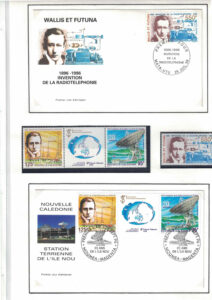

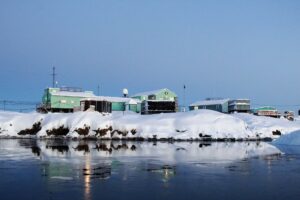 “The 26th Ukrainian Antarctic Expedition left for the Vernadsky Research Base (WAP UKR-Ø1) on March 24. Researchers will spend approximately 13 months in Antarctica,” the National Antarctic Science Center press office informs.
“The 26th Ukrainian Antarctic Expedition left for the Vernadsky Research Base (WAP UKR-Ø1) on March 24. Researchers will spend approximately 13 months in Antarctica,” the National Antarctic Science Center press office informs.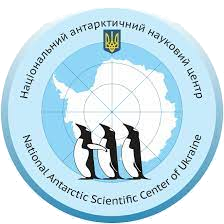 In total, the expedition includes 12 participants: 7 scientists, a doctor, a cook, a diesel engineer, a system mechanic and a system administrator. Of these, 11 men and one woman, a biologist Oksana Savenko, is going to the Base for the second time. This is also a record as no other woman had wintered twice before.
In total, the expedition includes 12 participants: 7 scientists, a doctor, a cook, a diesel engineer, a system mechanic and a system administrator. Of these, 11 men and one woman, a biologist Oksana Savenko, is going to the Base for the second time. This is also a record as no other woman had wintered twice before. The Atmospheric Research Observatory (ARO) at the Amundsen-Scott South Pole Station (WAP USA-21) is a National Science Foundation (NSF) facility located near the geographic South Pole. The NSF has allocated ARO to a long-term research program conducted by the National Oceanic and Atmospheric Administration’s Global Monitoring Division (NOAA/OAR/ESRL/GMD).
The Atmospheric Research Observatory (ARO) at the Amundsen-Scott South Pole Station (WAP USA-21) is a National Science Foundation (NSF) facility located near the geographic South Pole. The NSF has allocated ARO to a long-term research program conducted by the National Oceanic and Atmospheric Administration’s Global Monitoring Division (NOAA/OAR/ESRL/GMD).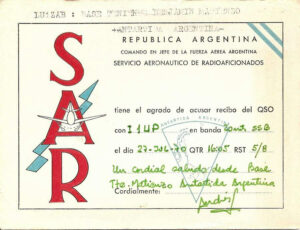 Matienzo Base 64° 50’ South, 60° 07’ West (Base Aérea Teniente Benjamín Matienzo)
Matienzo Base 64° 50’ South, 60° 07’ West (Base Aérea Teniente Benjamín Matienzo) 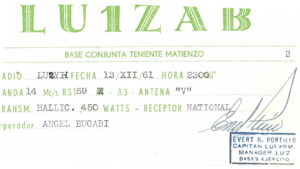
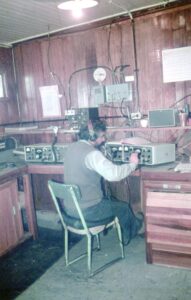 After the kitchen, the Radio Station was our second meeting place. While in the first one we met to fraternize, make comments, tell jokes and have a few bitter ones enjoying the occurrences of our cook, the Radio Station was the obligatory point of attendance to listen and find out the latest news and communicate through the networks established to make official links and also to get in touch with our loved ones.
After the kitchen, the Radio Station was our second meeting place. While in the first one we met to fraternize, make comments, tell jokes and have a few bitter ones enjoying the occurrences of our cook, the Radio Station was the obligatory point of attendance to listen and find out the latest news and communicate through the networks established to make official links and also to get in touch with our loved ones.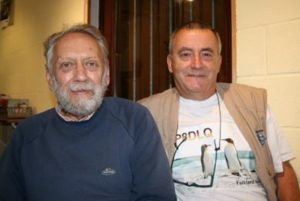 Pic aside shows Roger ON4TX/OR4TX to the left with ON5NT Ghis
Pic aside shows Roger ON4TX/OR4TX to the left with ON5NT Ghis Six Bulgarian polar explorers: Yordan Todorov, Petar Sapundzhiev, Emil Ivanov, Nikolay Nikolov, Kamen Nedkov and the doctor Dr. Atanas Peltekov, after about a month of delay, on April 14 2021, left the Antarctic region and, by a Uruguayan military plane arrived in the southernmost Chilean city of Punta Arenas.
Six Bulgarian polar explorers: Yordan Todorov, Petar Sapundzhiev, Emil Ivanov, Nikolay Nikolov, Kamen Nedkov and the doctor Dr. Atanas Peltekov, after about a month of delay, on April 14 2021, left the Antarctic region and, by a Uruguayan military plane arrived in the southernmost Chilean city of Punta Arenas. activities. Damage to facilities and buildings on the base caused by high winds during the time when no one was on the base was repaired and it was conserved for the coming winter. The site was prepared for the construction of the new laboratory block, a special hangar was built for the incinerator, which burns the waste ecologically, and all the data were taken from the year-round scientific equipment, which records climatic, seismic, mareographic and glaciological events, in the area when the base is not inhabited” said Prof. Dr. Hristo Pimpirev, head of all Bulgarian polar expeditions and director of the Bulgarian Antarctic Institute.
activities. Damage to facilities and buildings on the base caused by high winds during the time when no one was on the base was repaired and it was conserved for the coming winter. The site was prepared for the construction of the new laboratory block, a special hangar was built for the incinerator, which burns the waste ecologically, and all the data were taken from the year-round scientific equipment, which records climatic, seismic, mareographic and glaciological events, in the area when the base is not inhabited” said Prof. Dr. Hristo Pimpirev, head of all Bulgarian polar expeditions and director of the Bulgarian Antarctic Institute. Prof. Hristo Pimpirev, together with Javier Cacho, a Spanish scientist physicist , recently received the “Unifier of Cultures” award in the eighth “Worlds and Colors” contest, organized by the Association of Spanish speaking Journalists in Bulgaria. (pic to the left)
Prof. Hristo Pimpirev, together with Javier Cacho, a Spanish scientist physicist , recently received the “Unifier of Cultures” award in the eighth “Worlds and Colors” contest, organized by the Association of Spanish speaking Journalists in Bulgaria. (pic to the left) The Hams worldwide, thanks Dr. Pavlo Tarasovych UT1KY, Antarctic veteran for issuing a special Award to the radio amateurs who worked the special callsign EM25VER, issued to celebrate the 25th Anniversary of the Ukrainian Research Station Akademik Vernadsky (WAP UKR-Ø1) in Antarctica. Hams wishing to get the Award could write to Pavlo (
The Hams worldwide, thanks Dr. Pavlo Tarasovych UT1KY, Antarctic veteran for issuing a special Award to the radio amateurs who worked the special callsign EM25VER, issued to celebrate the 25th Anniversary of the Ukrainian Research Station Akademik Vernadsky (WAP UKR-Ø1) in Antarctica. Hams wishing to get the Award could write to Pavlo (
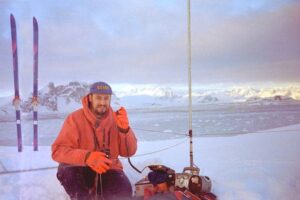
 Ale Antarctic Logistics & Expeditions manage several sites in Antarctica. One of those, is Union Glacier Camp at 79˚46’South, 82˚52’West, located in Ellsworth Land in Antarctica.
Ale Antarctic Logistics & Expeditions manage several sites in Antarctica. One of those, is Union Glacier Camp at 79˚46’South, 82˚52’West, located in Ellsworth Land in Antarctica.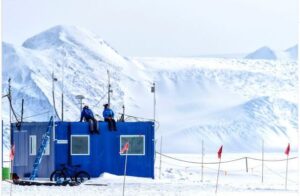
 Christchurch in the Southern Island of New Zealand is an outpost, an ideal location to jump down South, in Antarctica.
Christchurch in the Southern Island of New Zealand is an outpost, an ideal location to jump down South, in Antarctica.  The role of the Christchurch Antarctic Office is to co-ordinate the opportunities presented by Christchurch’s Antarctic Gateway status and to explore our historic and modern connections with the icy continent.
The role of the Christchurch Antarctic Office is to co-ordinate the opportunities presented by Christchurch’s Antarctic Gateway status and to explore our historic and modern connections with the icy continent. has flowed through Christchurch, starting over 100 years ago with the “Heroic Era” explorations of Captain Robert Falcon Scott and Sir Ernest Shackleton, who both used Christchurch as a base camp for their Antarctic expeditions».
has flowed through Christchurch, starting over 100 years ago with the “Heroic Era” explorations of Captain Robert Falcon Scott and Sir Ernest Shackleton, who both used Christchurch as a base camp for their Antarctic expeditions».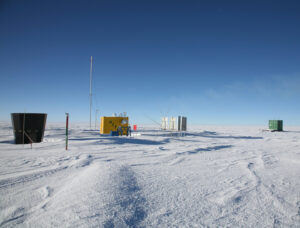
 Dome A nearest Base is the Chinese. Kunlun Station located at 80° 25’ 01”South, 77° 06’ 58” East (WAP CHN-NEW), the only Base there around.
Dome A nearest Base is the Chinese. Kunlun Station located at 80° 25’ 01”South, 77° 06’ 58” East (WAP CHN-NEW), the only Base there around. In a recent mail (April 2 2021) Lee Sang Hon (DS4MNJ) informs that antenna for 80m~10m is installed and now he is ready for FT8 and CW. SSB is possible but it is only for contest or request.
In a recent mail (April 2 2021) Lee Sang Hon (DS4MNJ) informs that antenna for 80m~10m is installed and now he is ready for FT8 and CW. SSB is possible but it is only for contest or request.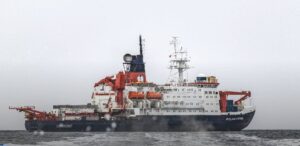 Polarstern from Stanley on the Falkland Islands to the home port of Bremerhaven begins last, Friday, April 2,
Polarstern from Stanley on the Falkland Islands to the home port of Bremerhaven begins last, Friday, April 2,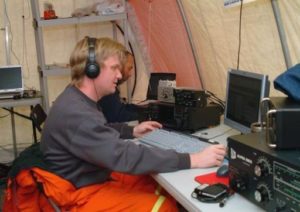 Among them is Felix, DL5XL, who has been very active on the bands in the past few months under DP0GNV from the Neumayer III Research Station (WAP DEU-Ø8) and under DP0POL/MM from on board the Polarstern. Together with Theresa, DC1TH, he made it possible for many radio amateurs to have very special radio contact via QO-100 or on shortwave in his limited free time; we reported several times.
Among them is Felix, DL5XL, who has been very active on the bands in the past few months under DP0GNV from the Neumayer III Research Station (WAP DEU-Ø8) and under DP0POL/MM from on board the Polarstern. Together with Theresa, DC1TH, he made it possible for many radio amateurs to have very special radio contact via QO-100 or on shortwave in his limited free time; we reported several times. While the situation is slightly different today, the celebrations will also change in the pandemic. But that does not mean one cannot spread positivity and warmth on this day.
While the situation is slightly different today, the celebrations will also change in the pandemic. But that does not mean one cannot spread positivity and warmth on this day.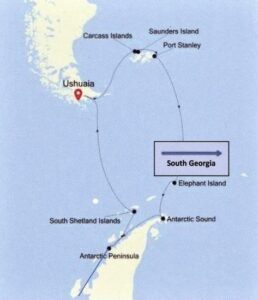 The voyage of the National Geographic Orion from February 16, to March 7, 2016, followed the map counterclockwise. The purpose of the trip was exploration of the Antarctic Peninsula by ship and on land, and commemoration of the 100th anniversary of Earnest Shackleton’s near disastrous voyage to Antarctica and ultimate rescue, 1914 — 1917.
The voyage of the National Geographic Orion from February 16, to March 7, 2016, followed the map counterclockwise. The purpose of the trip was exploration of the Antarctic Peninsula by ship and on land, and commemoration of the 100th anniversary of Earnest Shackleton’s near disastrous voyage to Antarctica and ultimate rescue, 1914 — 1917.